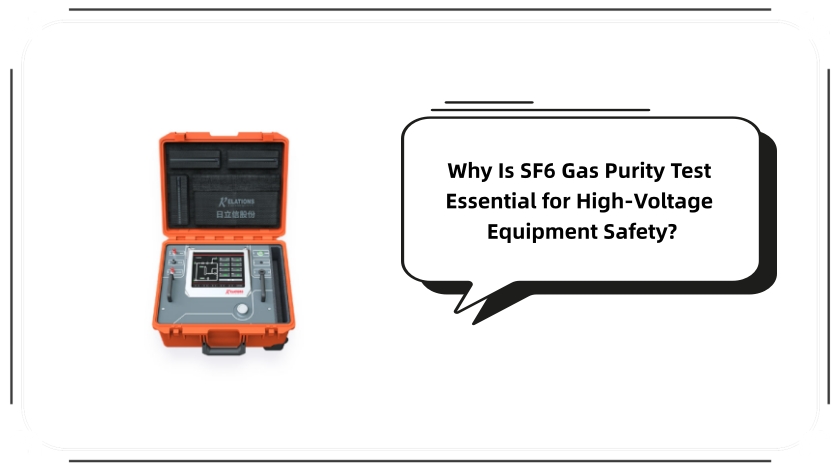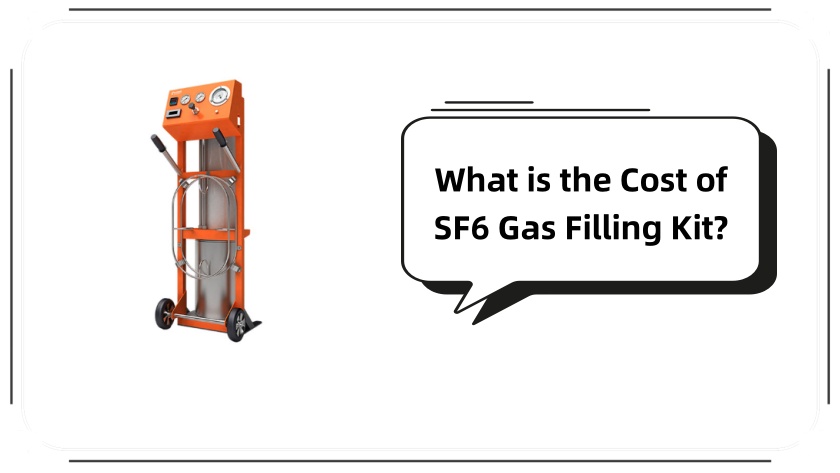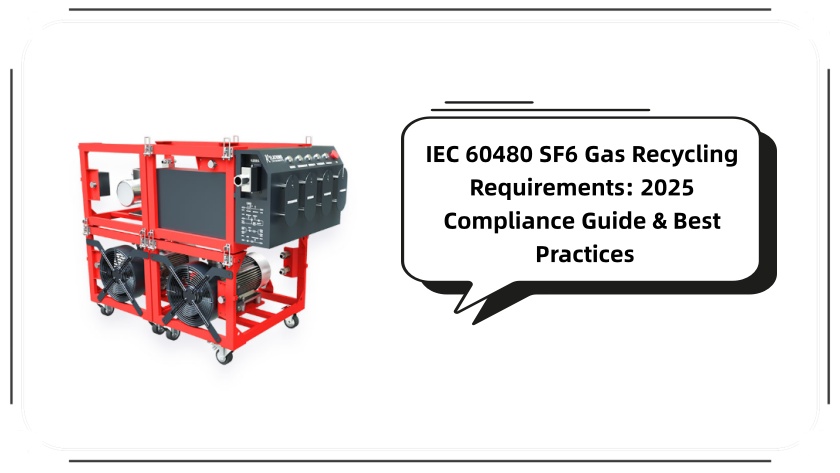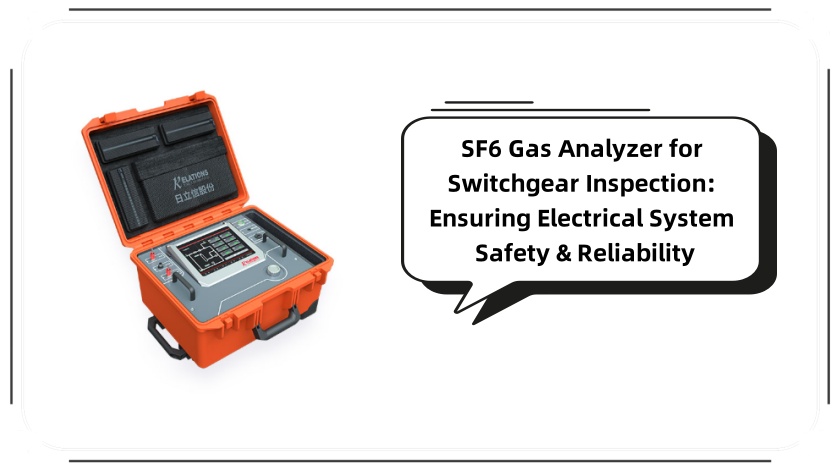Why Is SF6 Gas Purity Test Essential for High-Voltage Equipment Safety?

SF6 (sulfur hexafluoride) gas is widely used in high-voltage electrical equipment—such as circuit breakers, transformers, and gas-insulated switchgear (GIS)—for its excellent insulation and arc-quenching properties. However, the performance of SF6 gas directly depends on its purity. Impurities like air, moisture, or decomposition byproducts can degrade insulation, corrode equipment, and even pose safety risks. This is where SF6 gas purity test becomes critical: it ensures the gas meets industry standards, extends equipment lifespan, and prevents unexpected failures.
1. Why SF6 Gas Purity Test Is Non-Negotiable
The consequences of skipping or neglecting SF6 gas purity testing are far-reaching:
Insulation breakdown: Impurities like oxygen or nitrogen reduce SF6’s insulating capacity, increasing the risk of electrical arcing and equipment damage.
Corrosion and wear: Moisture in SF6 reacts with the gas to form acidic byproducts (e.g., HF), which corrode metal components of GIS or transformers.
Reduced arc-quenching efficiency: Impure SF6 cannot quickly extinguish arcs during circuit switching, leading to overheating and equipment failure.
Safety hazards: Decomposition products of impure SF6 (e.g., SO2, CO2) are toxic, endangering maintenance workers if leaked.
For new SF6 gas, a purity test is required before filling equipment. For in-service equipment, regular testing (typically annually or after maintenance) is mandatory to monitor purity degradation over time.
2. Common Methods for SF6 Gas Purity Test
Two primary methods are widely used for SF6 gas purity testing, each suited to different scenarios:
a. Gas Chromatography (GC)
Gas chromatography is the gold standard for high-precision SF6 purity testing. It works by:
Injecting a small sample of SF6 gas into a chromatographic column.
Separating the gas into its components (SF6, air, moisture, etc.) using a carrier gas (e.g., helium).
Detecting each component with a sensor (e.g., thermal conductivity detector) to calculate purity percentage.
GC offers accuracy up to ±0.1% and is ideal for laboratory testing or detailed equipment diagnostics. However, it requires specialized equipment and trained technicians.
b. Portable SF6 Purity Testers
For on-site testing (e.g., at power substations), portable testers are more practical. These devices use infrared (IR) spectroscopy or thermal conductivity principles to measure purity quickly (results in 1–2 minutes). Key advantages include:
Compact design for easy transportation.
Real-time readings to guide immediate maintenance (e.g., refilling or purifying SF6).
Lower cost than lab-based GC testing for routine checks.
When choosing a portable tester, prioritize models with a purity measurement range of 0–100% and compliance with international standards (e.g., IEC 60480).
3. International Standards for SF6 Gas Purity
To ensure consistency, SF6 gas purity testing must align with global standards. The most widely adopted include:
IEC 60480: Specifies that new SF6 gas must have a purity of ≥99.9% (v/v), with air impurities ≤0.1% and moisture ≤60 ppm (v/v). For in-service gas, purity should remain ≥99.5% to maintain performance.
ANSI C37.122.1: Requires similar purity levels for GIS equipment, adding that SF6 decomposition products (e.g., SO2) must be ≤0.1 ppm to avoid corrosion.
GB/T 12022: China’s national standard, matching IEC 60480 requirements for both new and in-service SF6 gas.
Adhering to these standards ensures that test results are credible and that equipment operates safely.
4. Common Challenges in SF6 Gas Purity Testing (and Solutions)
Even with the right tools, SF6 gas purity testing can face obstacles. Here’s how to address them:
Sample contamination: During sampling, air can enter the sample tube, skewing results. Solution: Use dedicated, pre-evacuated SF6 sampling hoses and ensure tight connections to the equipment valve.
Equipment calibration drift: Portable testers lose accuracy over time. Solution: Calibrate devices every 6–12 months using certified SF6 reference gas.
Low-temperature interference: Cold weather (below -10°C) can slow gas flow in portable testers. Solution: Choose testers with built-in heating systems or warm the device before use.
5. How to Choose a Reliable SF6 Gas Purity Testing Service
For businesses without in-house testing capabilities, selecting a professional service is key. Look for providers that:
Hold certifications like ISO 9001 (quality management) and ISO 17025 (laboratory accreditation).
Use calibrated, industry-compliant equipment (e.g., GC systems or portable testers meeting IEC 60480).
Offer fast turnaround times (24–48 hours for lab tests) and detailed reports with purity values and recommendations.
Provide on-site testing for large or immobile equipment (e.g., GIS substations).
SF6 gas purity test is not just a regulatory requirement—it’s a critical step in protecting high-voltage electrical equipment, reducing maintenance costs, and ensuring worker safety. By choosing the right testing method, following international standards, and addressing common challenges, you can keep SF6-based equipment operating efficiently for decades. For reliable results, invest in quality tools or partner with a certified testing service to avoid costly equipment failures.
Need support with SF6 gas purity testing? Reach out to a trusted provider today to schedule a test or learn more about maintaining your equipment’s performance.
Leave A Message
Your email address will not be published. Required fields are marked *





